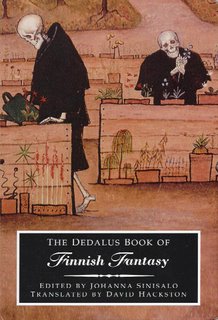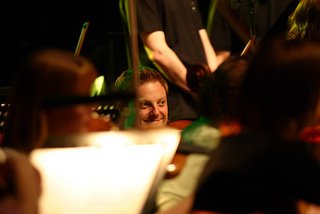Another year, another Finlandia Prize, another furore. This competition always sparks controversy, and given this year’s shortlist Paavo Lipponen’s decision was bound to awaken strong feelings whichever way the prize finally went. The decision this year to award the prize to Bo Carpelan, an author who has already won the prize once before, for his novel Berg (‘Mountain’), together with the fact that the shortlist included another previous winner, has prompted a much-needed debate on the nature of the prize in general. Many of the arguments presented could equally apply to competitions of any kind.
I was somewhat surprised to read articles, notably in Aamulehti, condemning the prize, the recipient and this year’s ‘dictator’. The idea that an author should not be allowed to win the same competition twice – for two separate works – seems absurd, but far more absurd is the notion that the point of the prize is that every author will eventually has his / her turn at winning. If everybody takes it in turns to win the prize, winning itself has no value or meaning.
Aamulehti’s esteemed literature critic Matti Mäkelä claims that the credibility of the Finlandia Prize is now irreparably damaged by virtue of its being awarded to the same author twice. Perhaps he should consider the fact that, whether we like it or not, the outcome of the prize IS subjective, the final decision is left to a single reader. On the contrary, the credibility of this institution in very much intact, as Antti Majander pointed out in today’s HS, the winner should represent ‘the best, not the most appropriate’ work of Finnish literature. If a writer is consistently excellent, should that go unnoticed simply because s/he has been acknowledged once before?
Last month, on the day the Finlandia shortlist was announced, I happened to bump into a nameless publisher in the Academic Book Shop. The said publisher was shocked and outraged that none of their books were to be found on the list. I couldn’t help wondering whether it had ever crossed said publisher’s mind that perhaps none of their books that year were worthy of a place on the shortlist amongst the crème of new Finnish literature this year.
Time and again it occurs to me that publishers are entirely blind to anything outside the ‘business’ of the book world. It seems that selling copies of a book is more important than rejoicing at the quality of that book. Similarly, the ability to assess objectively the quality of one’s own publications seems sadly lacking: not all books are great works of literature, no matter how much one publicly lauds them to anyone who will listen or dismisses the opinions of anyone who cannot see the emperor’s new clothing. In the tiny Finnish book market, winning the Finlandia or similar prizes ensures increased sales figures (naturally, the winner is always announced in the run-up to Christmas…) and continuing publicity for both novel and author. For the publisher, it seems that of primary importance is having the kudos of being able to say that ‘our book’ won the prize; ‘our book’ was shortlisted.
Media circuses like the Finlandia Prize or, say, the recent Sibelius Violin Competition, are becoming increasingly detached from what ought to be their fundamental raison d’être: to celebrate art, creativity, flair, genius. One need only read a single column in
Helsingin Sanomat dealing with the Violin Competition to realise that what is most important is not musicality, but which of the automatons on stage can perform a Paganini caprice without making a technical mistake. Or one could listen to Madonna’s latest travesty to good taste and realise that what sells records is not creative genius (the woman’s sheer lack of originality never fails to astound me) but good marketing and pilfering the right pieces of music from real artists. No wonder Sony delayed the release of Fiona Apple’s marvellous third album for so many years: after all, if it’s not going to be a commercial success, what’s the point?



